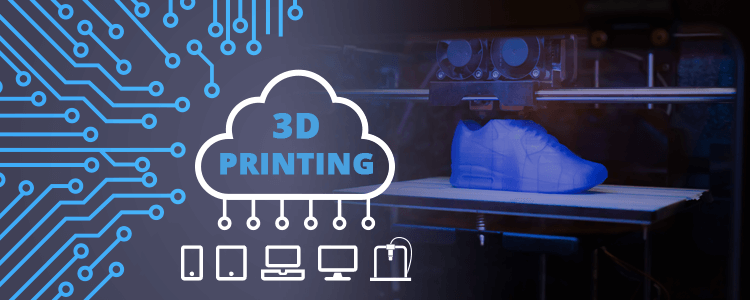It is clear by now that cables and SD cards are not the future of 3D printing. As more users demand their printers to be wireless, 3D printer manufacturers are increasingly making wifi-connectivity a priority for their printer line. However, many of them are simply connecting a desktop 3D printer to a local network and that, is not the future.
A step further is to connect printers to a cloud platform. We live in the era of the internet of things, where every device gets connected to the cloud. However, most 3D printer manufacturers don’t really understand what the cloud does for a 3D printer. What are the advantages of cloud versus local network for 3D printers? Do 3D printers gain value when they are cloud-connected?
Over-the-air Software Upgrades
3D printers must be instantly upgradable for them to have long-term value. Just think about your smartphone updates. Would you buy an iPhone if it didn’t automatically update its iOS? Or imagine if you had to use a CD everytime you need to upgrade your laptop’s software. Manual software upgrades don’t make sense anymore. The cloud allows the printer to automatically upgrade itself. Firmware, touchscreen software, and slicer are updated over-the-air thanks to the cloud.
Cloud Slicing
One of the problems with 3D printing is that once you have a 3D model (STL file) you have to send it to the printer in a language the machine understands. Currently, this is a 3-step process since people have to download STL files, slice them in the computer and send the gcode to the printer. The cloud removes the need for downloads as the slicing occurs online. With the cloud, printing gets simplified into a one-step process: click & print.
Printers that come with this functionality are particularly useful for people that use Chromebooks. For example, most of the schools in the U.S. have Chromebooks and can’t install slicing software. Printers that are cloud-connected sell well to schools.
3D printer manufacturers can develop its own cloud slicer or use third party ones like the AstroPrint Cloud Slicer. Manufactures can also preset the optimal slicer settings for all their customers. Cloud slicing simplifies the printing workflow dramatically and bring us to the next point:
Easy Access to Content
People buy printers because of the things they can print with them. Printers gain value when connected to printable content. A 3D printing cloud platform allows users to store stl files in the cloud and print with one click. Users can also easily access third-party content and send it to the printer. For example, in the AstroPrint Platform, people can access third-party content like Thingiverse or Myminifactory from the same platform. In addition, users can sync files on multiple devices and easily manage multiple printers from anywhere.
Thanks to the cloud, the software of a 3D printer can be extended through an API, allowing developers to distribute more content via apps. This Toy Maker app is a good example of how an app connects to a 3D printer via the cloud.
Allows Manufacturers to Expand their Business
Manufacturers can partner with content providers to create their own gallery of designs to make their printers more attractive to different groups of people. This is how manufacturers will expand sales over the next few years. Selling less on hardware and selling more on what people can do with their printers. Companies can use this built-in system as a marketing tool to target printers to schools or businesses that operate with several printers.
Developers also use the cloud APIs to build new software functionalities. For example, AstroPrint recently resealed a Queues app that allows users get all their objects ready to print and assign them to different printers.
A cloud infrastructure gives new software functionalities and delivers content to 3D printers. Manufacturers can use content and new software functionalities as a marketing tool to grow their audience and to open up the market to users who would otherwise never get into 3D printing.
Bottom Line:
The cloud distributes content, expand software functionalities and makes 3D printers easy to use. Within 3 years, 3D printers that are not connected to the cloud will be considered antiquated, especially those used in homes and small businesses.
One thing preventing cloud adoption is that 3D printer manufacturers can’t afford to develop and maintain a solid cloud platform by themselves. But 3D printer manufacturers are starting to see the benefits of integrating with a standardized cloud platform and make innovations on top of it, instead of doing things from scratch. In 2018, we’ll see an increase in collaboration between software and hardware companies.


